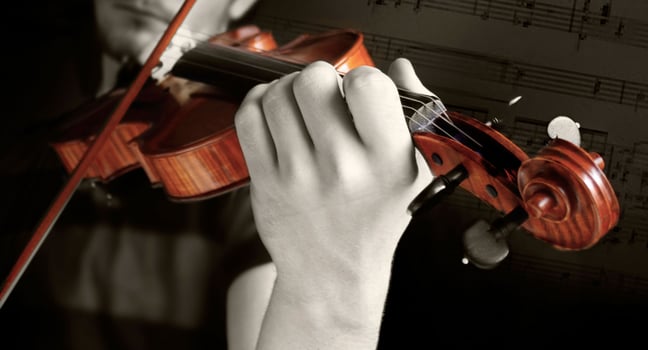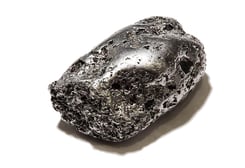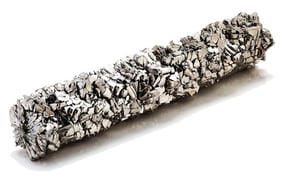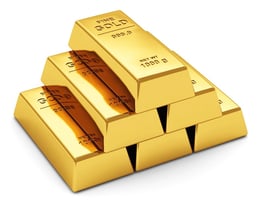 Of the four strings on the violin, the E-string is unique. With the exception of baroque violin E-strings, which are generally made from plain gut, the violin E-string is made from steel, offering very different characteristics than the other three strings. However, that’s just for starters – the type of steel, the alloys used, plating materials, windings – all contribute to the vast variety that allows violinists to choose their preferred string, for whatever reasons they wish.
Of the four strings on the violin, the E-string is unique. With the exception of baroque violin E-strings, which are generally made from plain gut, the violin E-string is made from steel, offering very different characteristics than the other three strings. However, that’s just for starters – the type of steel, the alloys used, plating materials, windings – all contribute to the vast variety that allows violinists to choose their preferred string, for whatever reasons they wish.
Some strings are plated with different metals, most commonly chrome and tin. Chrome offers a brilliant sound, while tin helps to produce a warm sound. Some strings are plated with precious metals. These metals augment the sound and playing qualities of the underlying steel core. This enables the player to choose the playing and tonal characteristics they want.
This guide describes, in general terms, the characteristics of Platinum, Titanium and Gold-plated strings.

PLATINUM
Platinum is a very dense metal, easy to form (malleable), and non-reactive. This makes it ideal as a coating for strings, to both add weight (mass) and inhibit corrosion of the steel core. It offers more warmth than plain steel, chrome steel, or aluminum wound E-strings. Platinum coated E-strings are noted for their big, warm sound, offering the most tonal complexity and overtones of all coatings, favored by many soloists.
Examples: Peter Infeld Platinum Plated Violin E-String, Evah Pirazzi Platinum Violin E-String
 TITANIUM
TITANIUM
Titanium is a very lightweight yet extremely strong and hard metal. It has a shiny, smooth, lustrous finish, protecting the steel core, and offering superb hand feel. Like Platinum, it is warmer than either plain steel or aluminum wound steel. Titanium adds power and clarity. It is ideal if a player seeks brilliance, especially in very high positions. Often, a violinist will use a Titanium E-string if they feel their violin is not speaking clearly or would like a faster response.
Examples: Opal Titanium-Wound Violin E-String, Vision Titanium Orchestra Titanium-Wound E-String
 GOLD
GOLD
Gold is the heaviest of the metals used as a plating material, adding the most amount of mass of any metal. It is rarely used in string manufacturing, except for the E-string, because of its high cost. Gold is very soft, adding a warm, sweet and powerful sound, with multiple overtones and easy response. Many players will employ a Gold-plated E-string to warm-up a bright instrument.
Examples: Larsen Gold-plated E-string, Obligato Gold E-string, Evah Pirazzi Gold-plated E-string, Goldbrokat Premium 24K E-string (new), Peter Infeld PI Gold-plated E-string, Infeld Red Gold E-string, Dominant "e-violin" Gold-plated E-string
Thank you for reading! For more information on products, strings-industry news, product reviews, announcments, and educational materials, be sure to subscribe to our blog. If you have more questions about E-strings, feel free to comment below, contact our customer care center at 1-800-248-SHAR, or reach out to us on facebook, youtube, or twitter!




